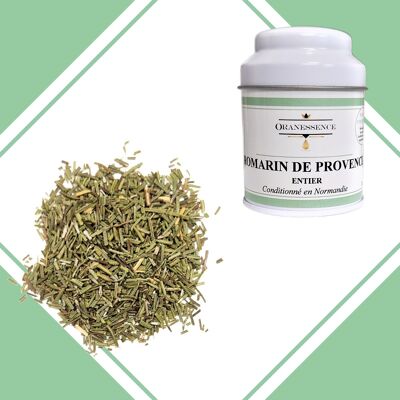


Rosemary, an aromatic herb popular in cooking and traditional medicine, is valued for its powerful aroma and flavor, primarily attributed to the unique chemical compound rosemary. It offers a characteristic aroma with notes of mint, thyme, pine, and a hint of pepper and lemon. On the palate, it evokes olive oil and peppermint, with a robust flavor and earthy notes, enhancing a variety of meat dishes, vegetables, and soups, and adapting well to recipes salty and sweet. Belonging to the Lamiaceae family, rosemary is mainly cultivated for its leaves, used to flavor and season various dishes. It originates from the Mediterranean basin and commonly finds its place in Western cuisine. However, it is also known for its medicinal properties and has been used for centuries to relieve various ailments. Interestingly, rosemary played a role in the legend of Hungarian Water, a rosemary alcoholate used by the Queen of Hungary to preserve her beauty and said to have been a factor in her marriage proposal by the prince from Poland. Health-wise, rosemary is rich in antioxidants, making it a protector of cells against free radicals, slowing premature aging and reducing the risk of chronic diseases, including cancer. It is also a source of vitamins A and C, as well as minerals such as potassium, calcium and iron, which contribute to general well-being, particularly in terms of neuromuscular and brain activity. Cut rosemary is a versatile herb, ideal for seasoning sauces, marinades, soups and stews. It pairs well with a variety of ingredients, from meat, poultry and fish to vegetables, especially zucchini, potatoes and greens. Additionally, it can also be used in pastries and desserts, such as apricot tartlets, cakes and fruit salads. To fully release its flavor, it is recommended to finely chop cut fresh rosemary, mix it with olive oil and other aromatic herbs, then add it to your dishes at the end of cooking.














